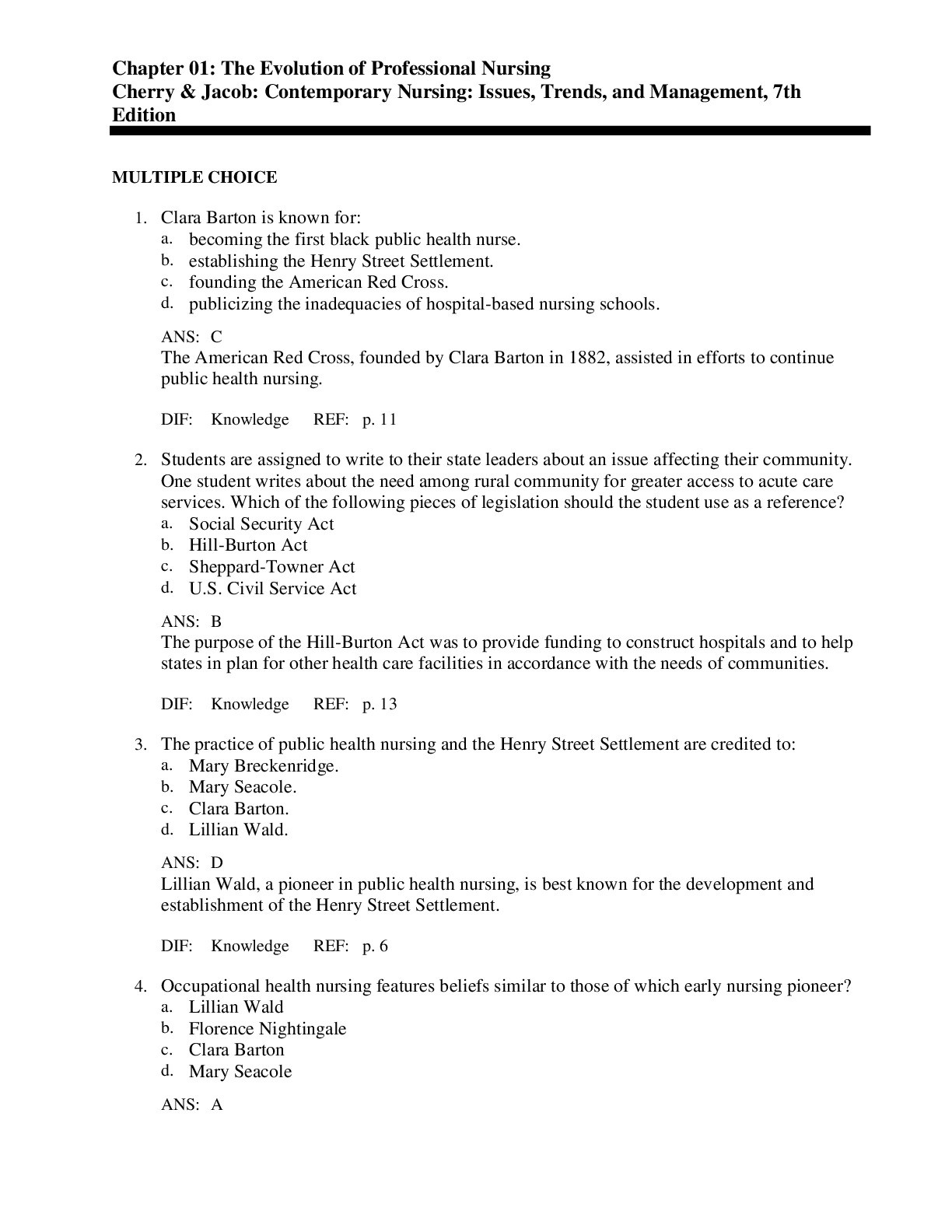All study resources > Contemporary Nursing Issues Trends (Nursing)
Contemporary Nursing Issues Trends
1. Clara Barton is known for:
a. becoming the first black public health nurse.
b. establishing the Henry Street Settlement.
c. founding the American Red Cross.
d. publicizing the inadequacies of hospital-based nursing schools.
2. Students are assigned to write to their state leaders about an issue affecting their community.
One student writes about the need among rural community for greate
...[Show More]
1. Clara Barton is known for:
a. becoming the first black public health nurse.
b. establishing the Henry Street Settlement.
c. founding the American Red Cross.
d. publicizing the inadequacies of hospital-based nursing schools.
2. Students are assigned to write to their state leaders about an issue affecting their community.
One student writes about the need among rural community for greater access to acute care
services. Which of the following pieces of legislation should the student use as a reference?
a. Social Security Act
b. Hill-Burton Act
c. Sheppard-Towner Act
d. U.S. Civil Service Act
3. The practice of public health nursing and the Henry Street Settlement are credited to:
a. Mary Breckenridge.
b. Mary Seacole.
c. Clara Barton.
d. Lillian Wald.
4. Occupational health nursing features beliefs similar to those of which early nursing pioneer?
a. Lillian Wald
b. Florence Nightingale
c. Clara Barton
d. Mary Seacole
5. What historical event first led to the recognition of the contribution of blacks to nursing?
a. Florence Nightingale’s acceptance of black nurses into the first nursing school
b. The contributions of black nurses at the Pennsylvania Hospital, the first hospital in
America
c. Mary Seacole’s efforts to care for soldiers during the Crimean War
d. The work done by wives of wealthy black nobles who carried food and medicine
from house to house during the Middle Ages
6. World War I contributed to the advancement of health care by:
a. increasing the number of private care hospitals and decreasing the role of public
health services.
b. employing a large number of civilians to provide care to returning soldiers through
the Red Cross.
c. introducing specialists in nursing such as nurse anesthetists.
d. increasing the number of community health nurses.
7. The primary purpose of the Social Security Act of 1935 was to:
a. increase research that focused on minority groups.
b. provide medical care for chemically impaired persons.
c. ensure health care for older adults through a national insurance system.
d. decrease the public’s financial burden by limiting services offered by local health
departments.
8. A client asks the nurse, “Can you explain Medicare, an amendment to the Social Security
Act?” The nurse responds that Medicare:
a. led to many hospital closings, along with a decrease in acute care hospital–based
nursing care.
[Show Less]
